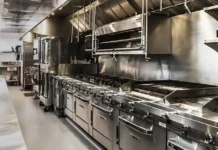
Article contributed by Stella Lincoln
Hygiene is more than cleanliness
Usually, when people hear the word hygiene, they associate it with solely with cleanliness, and keeping their personal surroundings tidy. In actuality, hygiene is much more than cleanliness. It is a set of practices followed for the conservation of health. In modern health sciences, there is a set of basic specified rules for different conditions. These rules remain the same irrespective of diverse cultures, background, or country.
The regular hygiene practices either its personal hygiene, restroom hygiene, or in the food industry, all are accounted as healthy guidelines. Contrary, ignoring practices of sanitation are regarded as unhealthy and harmful. Hygiene also takes care of food for consumption as it prevents growth and contamination of germs and bacteria.
Importance of hygiene in the food industry
Hygiene in the food industry is given high consideration as it is directly related to the health of consumers whether they are buying canned food or dining in a restaurant. Besides, hygiene is not only linked to business risk, but there are also legal constraints which must be adhered to avoid penalization. Therefore it becomes mandatory to strictly follow the hygiene practices whether it’s a production area of a manufacturing company or kitchen of a food restaurant.
In general, it not an easy task to maintain hygiene in the food industry and requires crucial steps to be taken to preserve and retain food safety. Following sanitary practices helps in reducing contamination while processing, handling, and serving food products. It establishes a promoted and convenient safety system.
Effects on demand and supply curve
Hygiene can precisely impact the demand and supply curve. Let’s understand it with a simple example of two companies providing catering services and are located in the same food street. Company ‘A’ has high priced items but follows the sanitation practices and maintains a hygienic environment. Whereas company ‘B’ charges less, but the hygiene level is inferior. Thus the demand for company A would be more even though it has high prices. Therefore, catering strategies based on hygiene practices can bring more business to the company.
To dig deep into this phenomenon, the two aspects of the demand and supply curve are briefly discussed below:
Factors impacting supply curve
Following are the elements which can affect the supply curve, thus should be given proper consideration to maximize the adequate supply.
1. Reduces food wastage
Food waste is the major drawback of ignoring hygiene practices in the food industry as food gets expired or turns unsuited for utilization. If a food item which needs to be kept at low temperature (either in a refrigerator or cold storage area) is kept open at the shelf of restaurant’s kitchen, it will definitely become hazardous and unsafe for use.
2. Enhance the efficiency of staff
A hygienic workplace can significantly increase the punctuality of staff, thus reducing sick leaves, which will save a noticeable amount of money for the business. On the other side, if hygiene standards are compromised, it will adversely affect the health of workers resulting in more absenteeism. Therefore, proper hygiene work must be implemented for the disinfection of harmful viruses and bacteria for a healthy environment.
Stella Lincoln is a freelance writer at Academist Help

























